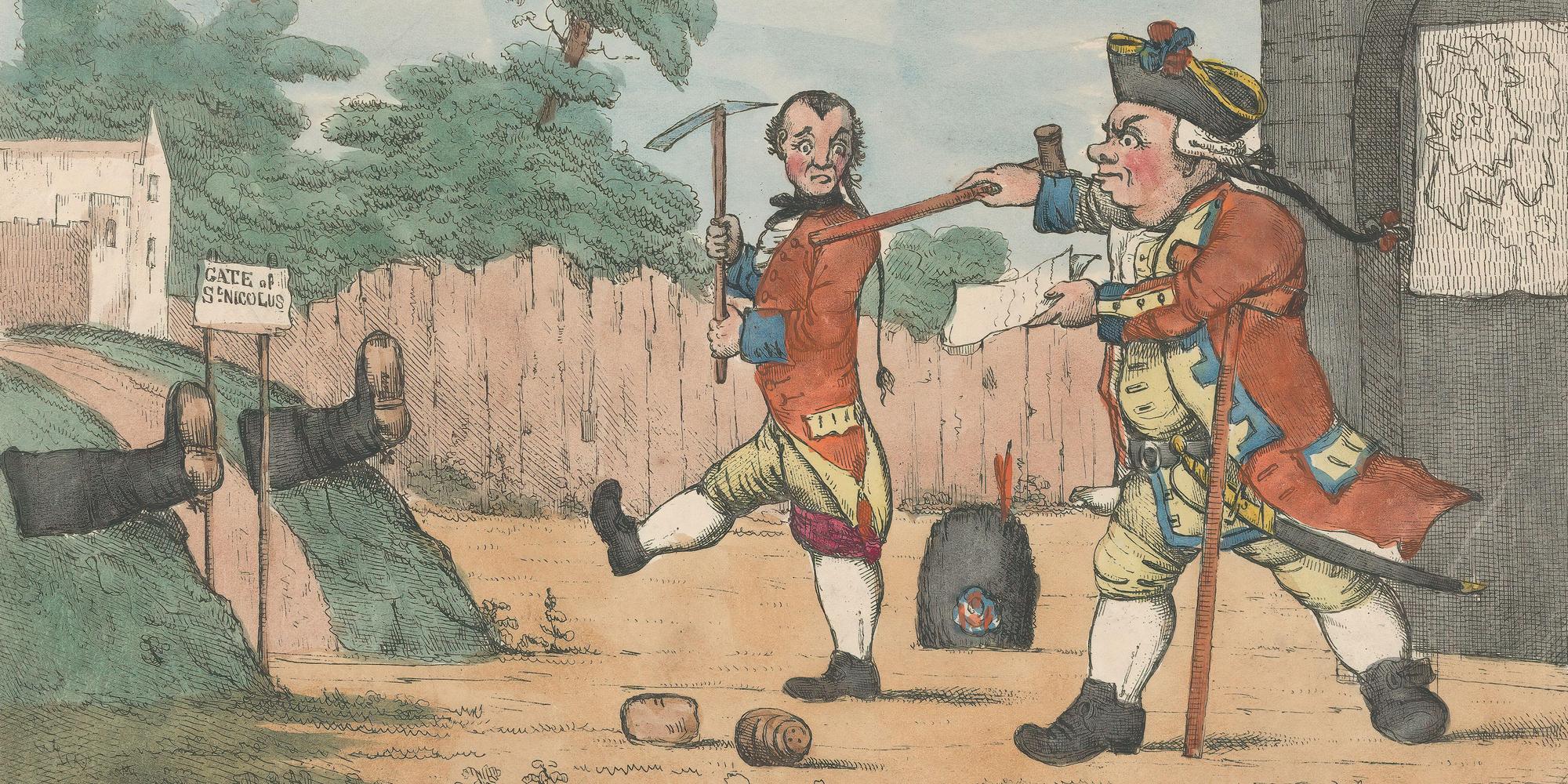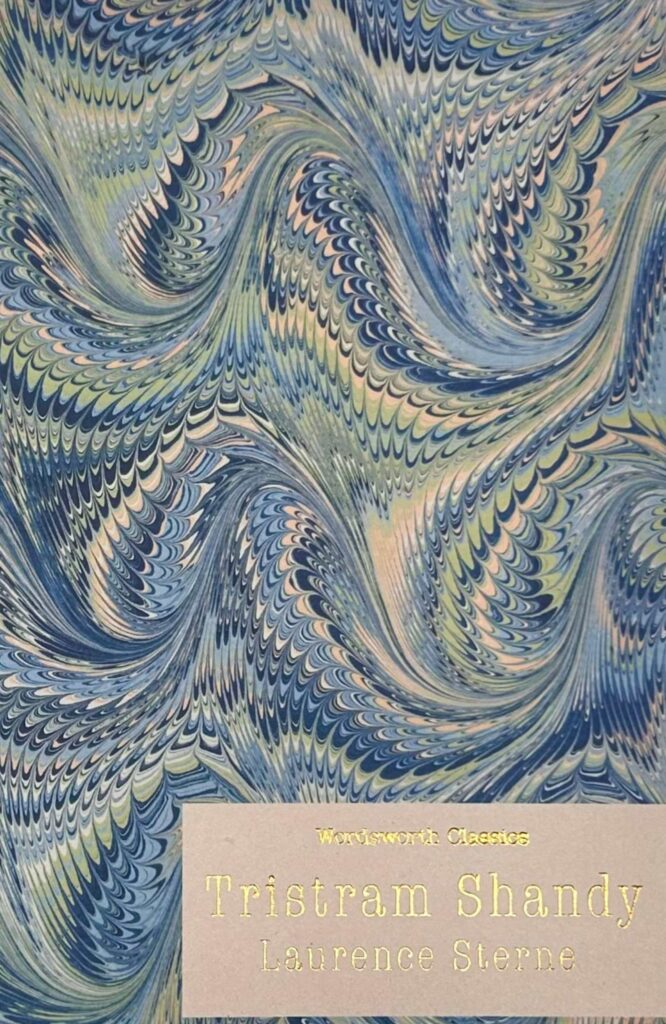
David Stuart Davies looks at Tristram Shandy
This unique and extraordinary novel has entertained readers since its first publication in 1759. David Stuart Davies takes up the story.
Laurence Sterne (1713 –1768) was an Irish novelist and an Anglican clergyman. He is recognised as one of the most important forerunners of psychological fiction and his writings brought a breath of fresh air and ingenuity to English literature with a free-flowing style that still has its resonances today. He pushed the boundaries of novel writing and created a form of a stream of conscious writing for comic and satirical effects.
In his introduction to the Wordsworth edition of The Life and Opinions of Tristam Shandy, Gentleman, Sterne’s most famous and successful work of fiction, Cedric Watts refers to it as an ‘astonishing novel.’ Indeed, this novel with its kaleidoscopic narrative certainly is ‘astonishing’ and has so many unique facets that it is very difficult to pin down and explain. Indeed many readers may well not regard this as a novel at all in the traditional sense. The work professes to be a fictional autobiography but Sterne’s rambling text – comprising nine volumes published over the course of several years, from 1759 to 1767 – is also an experiment in form and structure containing inconsequential anecdotes and textual in-jokes, including, famously, a blank page, as well as bold innovations in tone and style. Sterne combines the sentimental with the bawdy, the philosophical with the silly and presents us with a series of detailed character studies. Sterne’s work modelled a new kind of literary form, one that even he could not define easily.
The titular hero is conceived early in the book, although this nearly does not happen because the coitus is interruptus when his mother, in the midst of an amorous embrace, suddenly asks her husband if he has remembered to wind the clock. This early piece of whimsy characterises the humour of the book. One of the peculiarities of Tristram Shandy‘s narrative structure is that, despite the fact that Tristram’s conception opens the novel, his actual birth does not occur until almost halfway through the book. This may be because of Sterne’s commitment to providing the rich background that he feels is necessary to understand an individual’s life; or it may be an attempt to disorient the reader; or it could be both. Sterne does not make it clear and so we have to guess.
Wildly experimental for its time, Tristram Shandy seems almost a modern avant-garde novel. The story is narrated by Shandy, and diverts into endless digressions, interruptions, stories-within-stories, and other narrative devices. The focus shifts from the fortunes of the hero himself to the nature of his family, environment, and heredity. Sterne acknowledged the influence of Lockean psychology on his writing. The political theories of John Locke (1632 – 1704) were grounded in the notion of a social contract between citizens and in the importance of toleration of the viewpoint of others. The book tackles these ideas through the dealings within Shandy’s family offering repeated images of human unrelatedness and disconnection. The narrator is isolated in his own privacy and doubts how much, if anything, he can know for certain even about himself.
The book also toys with the limitations of language and teases an intricate drama out of Shandy’s imagining of, and playing to, the reader’s likely responses to his thoughts and dilemmas. Sterne broke all the rules: events occur out of chronological order, anecdotes are often left unfinished, and sometimes whole pages are filled with asterisks or dashes. If written in the twentieth-century one might well think that Spike Milligan had a hand in it.
Sterne’s direct comments to the reader changed the course of traditional novelistic interpretations, causing the narrative to divert through many jumbled and fragmentary events away from the main course of the plot. These digressive episodes reflect Sterne’s supposed inability to simply explain each event as it occurs, as he frequently interrupts these with commentary about how the reader should understand and follow each incident. By using this method, he prompts the reader’s close involvement in the text and their interpretations of the non-traditional plot. In this way, the author engages the imagination of the reader.
The publication of Tristram Shandy made Sterne famous in London and on the continent. He was delighted by the attention the work received, famously saying ‘I wrote not [to] be fed but to be famous.’ He seems to have achieved the greatest of pleasures not for the praise of his writings but for the money it earned him. In one letter, he wrote ‘One half of the town abuse my book as bitterly, as the other half cry it up to the skies—the best is, they abuse it and buy it, and at such a rate, that we are going on with a second edition, as fast as possible.’
The novel is not an easy one to dramatise but attempts have been made. In 2005, BBC Radio 4 broadcast an adaptation in ten 15-minute episodes directed by Mary Peate, with Neil Dudgeon as Tristram. Even more adventurous was the graphic novel by cartoonist Martin Rowson in 2010 which had all the wildness and bizarre qualities inherent in Sterne’s book.
Sterne’s book was adapted for the screen in 2006 as A Cock and Bull Story, directed by Michael Winterbottom. This movie adds further complexity to the original text by presenting itself as a film-within-a-film, featuring Steve Coogan and Rob Brydon playing themselves as egotistical actors during the making of a screen adaptation of the novel. Gillian Anderson and Keeley Hawes also play themselves in addition to their Tristram Shandy roles. Since the book is about a man attempting but failing to write his autobiography, this movie deals with the failure of trying to make a film about the book. In general, the movie received favourable reviews more for its knockabout humour than its attempt to bring Sterne’s novel to the screen, a novel which is a joyful celebration of the infinite possibilities of the art of fiction, and a wry demonstration of its limitations.
Image: The Siege of Namur by Captain Shandy and Corporal Trim (After Henry William Bunbury) Credit: Artokoloro / Alamy Stock Photo
Books associated with this article
